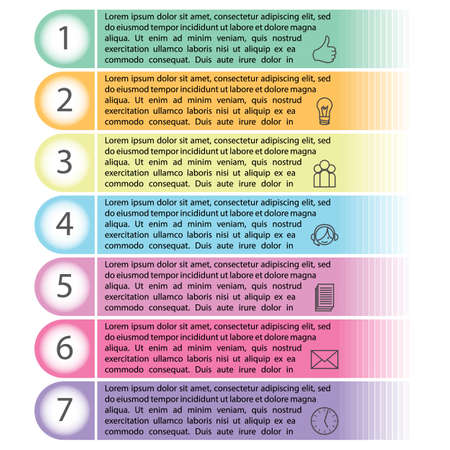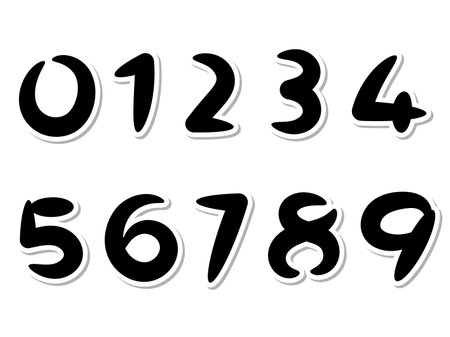1. Introduction to Bazi in the Western Context
Bazi, also known as the Four Pillars of Destiny, is an ancient Chinese metaphysical science that has guided personal destiny and decision-making for centuries in Eastern societies. But how does this tradition translate when it crosses continents and enters Western cultures? In recent years, interest in holistic wellness, self-discovery, and alternative ways of understanding ones path in life has brought Bazi into the spotlight among Western seekers. Yet, its journey into the West is not just about translation—its about transformation, adaptation, and finding a new resonance within American cultural values.
What is Bazi?
At its core, Bazi is a system that analyzes a persons birth data—specifically, the year, month, day, and hour of birth. These four pieces of information form the “Four Pillars,” each consisting of two Chinese characters representing elements and animal signs from the traditional Chinese calendar. By interpreting these combinations, practitioners believe they can reveal hidden strengths, challenges, relationship patterns, career paths, and even periods of luck or difficulty throughout a person’s life.
The Basics of Bazi: Four Pillars Breakdown
| Pillar | Represents | Corresponds To |
|---|---|---|
| Year Pillar | Ancestry & Early Environment | Animal Sign + Element at Birth Year |
| Month Pillar | Parents & Career Potential | Animal Sign + Element at Birth Month |
| Day Pillar | Your Core Self & Relationships | Animal Sign + Element at Birth Day |
| Hour Pillar | Children & Aspirations | Animal Sign + Element at Birth Hour |
Bazi Meets the West: A New Chapter Begins
As Bazi made its way into American circles—whether through Asian immigrant communities or curious spiritual explorers—it began to adapt to local languages and values. In the U.S., where individualism and personal empowerment are celebrated, Bazi readings often focus on self-acceptance, uncovering personal gifts, navigating career changes, or healing emotional wounds. The language shifted from ancient proverbs to relatable guidance; instead of fate being set in stone, destiny became something co-created with insight and intention.
Why Are Americans Drawn to Bazi?
- Personal Growth: People crave deeper self-understanding beyond typical personality tests.
- Cultural Curiosity: Interest in Eastern philosophies has grown with yoga, meditation, and mindfulness practices.
- Life Transitions: When facing big decisions or uncertainty, many seek clarity and reassurance from systems like Bazi.
- A Sense of Connection: In a fast-paced society, exploring one’s destiny offers grounding and meaning.
This merging of East and West is not just about learning a new tool—its about embracing an ancient wisdom with an open heart while making it relevant for today’s American lives. As we continue this exploration of how Bazi is perceived and practiced in the West, we’ll see how culture shapes not only what we believe but also how we heal and grow.
2. Western Encounters with Eastern Wisdom
The Arrival of Bazi in the West
Bazi, also known as the Four Pillars of Destiny, has a long history in Chinese culture. Its journey to the West began as people from China and other East Asian countries migrated to places like the United States and Canada. With them, they brought their traditions, wisdom, and spiritual practices—including Bazi.
Bazi’s Introduction Through Migration
In Chinatowns across American cities such as San Francisco, Los Angeles, and New York, Bazi readings became a quiet yet powerful way for immigrants to find guidance and comfort in a new land. Family gatherings and community events often included Bazi consultations to choose auspicious dates for weddings or business openings. Over time, curious neighbors and friends from other backgrounds started asking about these traditions, planting seeds for wider interest.
Pop Culture and New Age Movements
The late 20th century saw a growing fascination with Eastern philosophies in America. Books, television shows, and movies began to feature Chinese astrology and fortune-telling. The rise of yoga studios, meditation classes, and holistic wellness centers made people more open to exploring ancient systems like Bazi.
| Era/Movement | How Bazi Was Shared |
|---|---|
| 1970s-1980s New Age Movement | Bazi introduced through books, workshops, and metaphysical fairs alongside feng shui and I Ching |
| 1990s Pop Culture | Bazi themes appeared in magazines and TV specials about “Eastern wisdom” |
| 2000s-Present Digital Era | Bazi apps, online readings, YouTube channels, and social media influencers demystifying the practice for all ages |
Bazi’s Adaptation: From Tradition to Trend
As Bazi entered mainstream American consciousness, it adapted to fit local values. For example, instead of focusing only on traditional topics like marriage or career timing, modern practitioners now offer advice on personal growth, self-care, and finding life purpose—ideas that resonate strongly with Americans seeking meaning in a fast-paced world.
Everyday Language: How Americans Talk About Bazi
Today you might hear someone say they had their “Chinese birth chart read” or that theyre checking their “Bazi forecast” before making big decisions. This blend of ancient insight with modern vocabulary shows how Bazi continues to evolve while offering emotional healing and destiny guidance in an ever-changing society.

3. Cultural Interpretation and Misconceptions
When Bazi (also known as Four Pillars of Destiny) made its way into the Western world, it carried with it centuries of Eastern philosophy, wisdom, and a unique perspective on fate and self-understanding. However, as with many ancient practices that cross cultural boundaries, Bazi was met with both curiosity and confusion. Lets explore how people in the West have interpreted, adapted, and sometimes misunderstood this traditional Chinese metaphysical system.
Western Interpretations of Bazi
In the United States, Bazi is often compared to astrology or personality tests because these frameworks are familiar and accessible. Many people see Bazi as another way to “read your fortune,” similar to reading horoscopes or taking a Myers-Briggs assessment. While there are some similarities—such as using birth data to uncover personal traits—the depth and philosophy behind Bazi are much more rooted in Chinese cosmology and ideas about balance, destiny, and energy flow.
Common Adaptations in the West
To make Bazi more approachable for Western audiences, practitioners often adapt terminology and presentation. For example:
| Bazi Concept | Traditional Meaning | Western Adaptation |
|---|---|---|
| Heavenly Stems & Earthly Branches | Elements representing cosmic cycles and earthly influences | Planetary influences or zodiac signs |
| Five Elements (Wu Xing) | Wood, Fire, Earth, Metal, Water representing energy dynamics | Personality archetypes or life themes |
| Lucky/Unlucky Years | Cyclical changes in one’s fortune based on time | Good/bad luck periods similar to Western astrology transits |
Common Misconceptions About Bazi in the West
The meeting of Eastern wisdom and Western worldview sometimes leads to misconceptions. Here are a few:
- Bazi is just fortune telling.
Bazi is not simply about predicting events; its about understanding yourself, your strengths, challenges, and how to harmonize with lifes rhythms. - Bazi can change your fate instantly.
Bazi teaches about potential paths and timing but doesn’t guarantee instant transformation—personal growth still requires effort. - Bazi is only for “spiritual” people.
Anyone can use Bazi for self-reflection or decision-making; it’s not limited to spiritual seekers or believers in mysticism. - Bazi readings are always 100% accurate.
No system can predict every outcome perfectly; Bazi offers guidance rather than absolute certainty.
The Intersection of Worldviews: East Meets West
The American approach to self-discovery often focuses on personal empowerment, individualism, and actionable results. In contrast, traditional Bazi emphasizes harmony with nature, acceptance of destiny, and working with—not against—life’s flow. When these perspectives blend, it creates a unique opportunity: Americans can use Bazi as a tool for emotional healing and intuitive guidance while still honoring their own values of freedom and self-determination. This cultural adaptation invites us to bridge wisdom from different worlds and create a more holistic understanding of ourselves.
4. Bazi in Modern Western Wellness and Self-Discovery
How Bazi Became Part of the American Wellness Scene
In recent years, Americans searching for deeper self-understanding and life balance have discovered the ancient Chinese art of Bazi, or Four Pillars of Destiny. While Bazi was once viewed as mystical or foreign, it is now embraced as a practical tool within wellness trends focused on personal growth, career direction, and relationship insights. Many people see Bazi as a way to connect with their authentic selves and make sense of life’s challenges and opportunities.
Bazi for Personal Growth
People in the U.S. use Bazi charts much like they use personality tests such as Myers-Briggs or astrology readings. By analyzing birth dates and times, individuals receive a unique map of their strengths, challenges, and life themes. This self-knowledge can spark greater confidence and self-compassion—two key ingredients in emotional healing.
Common Uses of Bazi in American Wellness Culture
| Bazi Application | Description | Popular With |
|---|---|---|
| Personal Growth | Understanding life cycles, strengths, weaknesses, and potential paths | Wellness seekers, spiritual explorers |
| Career Advice | Identifying best-fit careers, timing for job changes or promotions | Young professionals, career changers |
| Relationship Guidance | Exploring compatibility, communication styles, timing in love | Couples, singles navigating dating |
Bazi for Career Advice and Life Direction
Bazi has found a unique place among American career coaches and life strategists. Instead of relying only on resumes or LinkedIn profiles, some coaches help clients interpret their Bazi charts to understand which industries or roles might truly suit their nature. Timing is also important: Americans are drawn to the idea that there are favorable periods for making big moves—something Bazi can illuminate.
Sample Insights from a Bazi Chart for Career Seekers
- Element Strengths: Discover if you’re best suited for dynamic (Yang) environments or creative (Yin) roles.
- Timing: Learn when “luck pillars” might bring new opportunities.
- Lifestyle Fit: Find out if entrepreneurship or steady employment aligns with your chart’s energy.
Bazi for Relationships and Communication Styles
A growing number of Americans turn to Bazi for relationship guidance. Couples explore how their elements interact—like Fire with Water—to better understand each other’s needs and reactions. Singles often seek Bazi readings before entering new relationships to check compatibility beyond just surface attraction.
Bazi vs. Other Tools in U.S. Self-Discovery Culture
| Method | Main Focus | Typical Use in America |
|---|---|---|
| Bazi (Four Pillars) | Life path & destiny based on birth data; element energies; timing cycles | Self-discovery, planning major decisions, understanding relationships deeply |
| Western Astrology | Zodiac signs; planetary positions; personality traits & forecasts | Daily horoscopes, compatibility checks, fun party discussions |
| Meyers-Briggs (MBTI) | Cognitive preferences; personality types (e.g., INFP) | Career counseling, team building, personal development workshops |
| Natal Chart Reading (Astrology) | Dive into birth chart for life purpose & talents based on planets/signs/houses | Life guidance sessions, exploring past patterns & future potentials |
The Emotional Healing Aspect of Bazi in the West
Bazi resonates emotionally with Americans who value introspection and self-care. Its language of “cycles,” “elements,” and “luck” offers gentle validation during tough times—a reminder that every season has meaning and every challenge holds an invitation to grow. In this way, Bazi becomes more than a prediction tool: it serves as an anchor for hope and mindful living within the fast-paced Western world.
5. Integration and Innovation
When Bazi, the ancient Chinese system of destiny analysis, made its way to America, it didn’t just stay in its traditional form. Instead, Americans found creative ways to integrate Bazi with familiar local practices, leading to fresh innovations and unique experiences. This blending has made Bazi more accessible and relevant for people seeking holistic growth and self-understanding.
Blending Bazi with Western Astrology
Many Americans already have a strong interest in astrology, so it’s no surprise that some practitioners began combining Bazi with Western zodiac readings. This fusion allows clients to see both Eastern and Western perspectives on their personalities, life cycles, and relationship dynamics. By exploring the strengths of each system, people gain deeper insights into their lives.
| Aspect | Bazi Approach | Western Astrology Approach | Combined Benefit |
|---|---|---|---|
| Personality Analysis | Based on birth year, month, day, and hour (Heavenly Stems & Earthly Branches) | Zodiac sign traits based on sun, moon, and rising signs | More nuanced self-understanding from two cultural viewpoints |
| Life Cycles | 10-year luck pillars highlight personal phases | Planetary transits indicate periods of change | Better timing for important decisions or transitions |
| Relationship Compatibility | Bazi compatibility charts using elements and animal signs | Synastry and composite charts between partners’ birth details | A richer picture of relationship strengths and challenges |
Merging Bazi with Life Coaching
The rise of life coaching in America opened another path for Bazi adaptation. Life coaches who learn Bazi use it as a tool for helping clients identify their natural talents, blocks, and purpose. Rather than focusing on fate alone, these coaches empower clients to make conscious choices based on their unique energetic blueprint.
How Coaches Use Bazi with Clients:
- Goal Setting: Aligning personal goals with favorable timing and energy cycles shown in the Bazi chart.
- Career Planning: Identifying suitable career paths based on elemental strengths and weaknesses.
- Mental Health Support: Using Bazi to understand recurring patterns or emotional challenges, then developing strategies for growth.
- Relationship Guidance: Offering insights into communication styles and compatibility through both Bazi and coaching tools.
A Holistic American Approach to Destiny Work
This spirit of integration reflects a broader American trend: the willingness to experiment, personalize spiritual tools, and seek out whatever methods bring healing and clarity. Whether someone is consulting an astrologer who cross-references their Bazi chart or working with a coach who weaves Eastern wisdom into modern self-development frameworks, the result is a richer, more holistic approach to understanding destiny—one that honors tradition while embracing innovation.
6. Challenges and Future Perspectives
Bazi’s Journey in the West: Facing Unique Obstacles
As Bazi, the ancient Chinese system of destiny analysis, finds its way into Western culture, it encounters both excitement and skepticism. Unlike its deep roots in Asian societies where tradition and spiritual beliefs are woven into daily life, the West often values scientific proof and clear logic. This difference can create challenges for those who want to explore or practice Bazi outside its original context.
Main Challenges for Bazi in the West
| Challenge | Description | Example |
|---|---|---|
| Cultural Differences | Bazi’s symbolic language and concepts may feel unfamiliar or confusing to Western audiences. | Elements like “Heavenly Stems” and “Earthly Branches” don’t have easy Western equivalents. |
| Skepticism Toward Spiritual Practices | Many Americans prefer evidence-based approaches, making it hard for mystical systems to gain trust. | People might compare Bazi to astrology or dismiss it as superstition. |
| Lack of Qualified Practitioners | Few trained Bazi consultants are available in Western countries, limiting access and accurate guidance. | Online resources may be inconsistent or unreliable. |
| Language Barriers | Much of Bazi’s wisdom is still only available in Chinese, making learning more difficult for English speakers. | Translations might lose meaning or create misunderstandings. |
| Misinformation & Stereotypes | Bazi is sometimes misunderstood or lumped together with other fortune-telling practices without recognizing its unique approach. | Social media spreads oversimplified or inaccurate information about Bazi readings. |
Looking Forward: The Future of Bazi in the West
Despite these hurdles, there’s a gentle but steady movement towards greater acceptance and curiosity around Bazi. People seeking meaning beyond traditional Western frameworks are beginning to appreciate its depth and potential for self-discovery. As more authentic educational resources become available and practitioners adapt their methods to fit American culture—using relatable examples, plain language, and transparent communication—Bazi may find a new home among those searching for holistic personal growth.
Opportunities for Growth and Integration
- Cultural Bridges: Collaborations between Eastern teachers and Western learners can help clarify Bazi’s teachings, translating not just words but also cultural context.
- Digital Resources: Podcasts, online workshops, and user-friendly apps make learning about Bazi more accessible than ever before.
- Personalized Guidance: As Americans increasingly value personalized wellness journeys, Bazi can offer a unique perspective on self-knowledge and decision-making.
- Community Building: Local meetups and online forums can create supportive spaces for sharing experiences with Bazi, helping newcomers feel less alone on their path of discovery.
Nurturing an Open-Minded Approach
The journey of Bazi in the West is still unfolding. By nurturing curiosity, respecting cultural differences, and encouraging honest conversation about what works (and what doesn’t), we can honor this ancient wisdom while making space for new interpretations. In doing so, we open the door to deeper healing and a richer understanding of our destinies—one step at a time.

